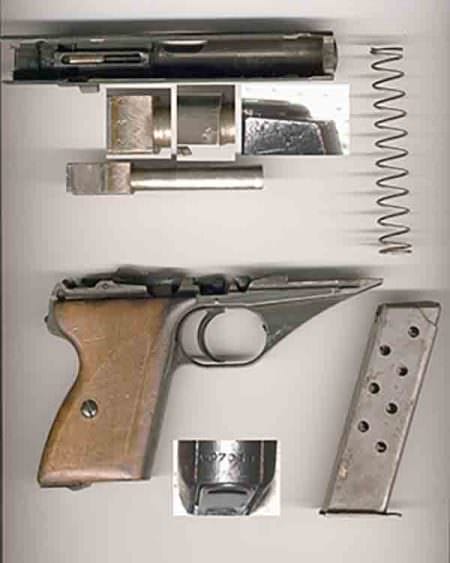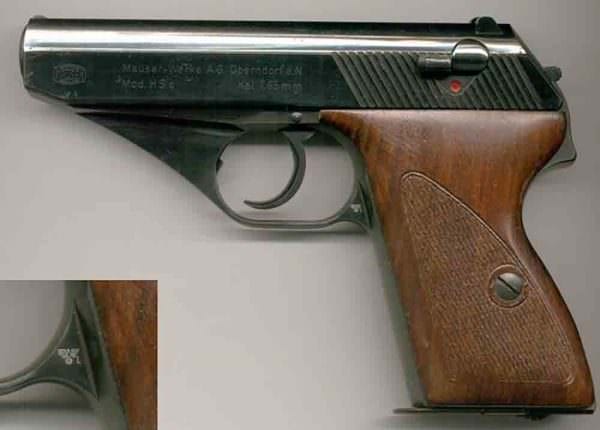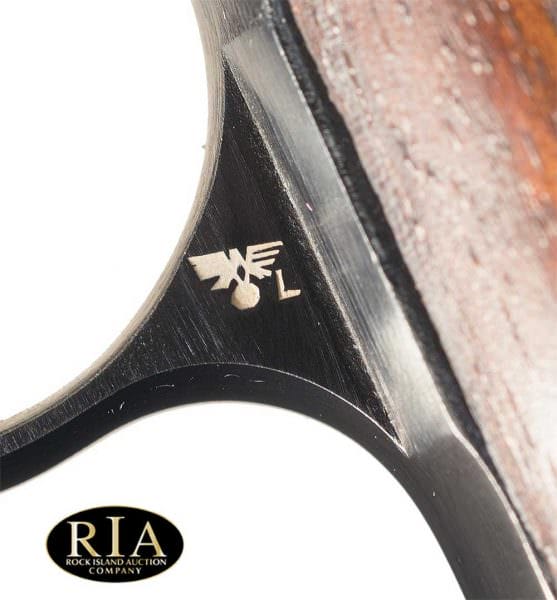By David Tong
In this article David Tong reviews the history of the Mauser HSc pistol.


U.S.A. –-(Ammoland.com)- The origins of the Mauser HSc pistol begin in the late 1930s.
The Nazi party was firmly in control, and the old design of the Mauser Model 1934 was losing sales compared to the 1929 Walther PP. It was also much more difficult to manufacture.
Mauser HSc Pistol

To compete, Alex Seidel of Mauserwerke designed the HSc. The letters “HSc” refer to “Hahn Selbstspanner Pistole,” while “c” stood for Third Variation after the first prototype models. Originally chambered in .32ACP, but better known on the Continent as 7.65 Browning, it is a blowback recoil-operated pistol with several unique features.
The pistol is of conventional all-steel construction, and its double/single action lockwork mimicked the Walther product. So did its fixed barrel with circumferential recoil spring placement, the lack of an external slide stop (hold-open device lever), a slide mounted decocker/safety lever on the left rear, and hammer-fired operation.
The similarities end there. The hammer is a nearly fully-shrouded design, to help ease the draw from a pocket as it will not snag. Unlike Walther’s safety lever which uses rotating block to prevent the hammer from contacting the firing pin during decocking, the Mauser’s has a stub firing pin extension that rotates out of the way with its drum, thus making an accidental mechanical discharge impossible.

Rather than the PP/PPK trigger guard that pulls down to initiate field-stripping, the Mauser uses a spring-loaded plunger located inside the forward trigger guard. Said trigger guard also has a sweeping fillet that is contoured toward the muzzle. Some have opined that this is “Art Deco,” but as a practical matter, it might make the HSc easier to quickly re-holster or slide into a pocket.
Finally, the Mauser used the older German “heel-catch” magazine release, while the Walther twins used the still prevalent Browning style button release.
Production began in 1940 at approximately serial number 700,000 as an extension of the Model 1934’s serial range. They were produced for both the German police units as well as the Kriegsmarine (Navy) and Wehrmacht (“Heer”– Army) as adjunct standard to the existing supply of the Walther pistols. Roughly 250,000 were built during WWII.
After the war, the Oberndorf factory was occupied by the French, and they built a quantity between 1945 and 1946 before razing the factory.
Postwar, the reconstituted Mauser company built HSc pistols from 1968 through approximately 1977, with the defunct Interarms company as the American importer. A majority were built in the 1970s in .380ACP or 9mm Kurz. After this, an Italian firm took over production of the pistol and these were built with concave trigger guards that dispensed with the previously sloped extension. Many of these pistols were also available in a polished nickel finish. All will still come with partially-checkered walnut stock panels secured with a single screw with a plain oil finish.


Ergonomically, the Mauser HSc Pistol has a larger grip with a slightly higher bore axis than the Walther pistols, and its shrouded hammer also ensures there’s no hammer bite. The rear grip contour locks the pistol into my hand a bit more nicely than the rather flat Walther PP’s.
The Mauser HSc Pistols pre-dated the modern designed jacketed hollow point bullets, and thus are only truly reliable with hardball. Military and police pistols were usually issued with two magazines and a small leather full-flap holster much as other German service pistols. In the collector world, they are usually quite a bit less expensive to acquire than the Walther, thus a bit of a bargain.
